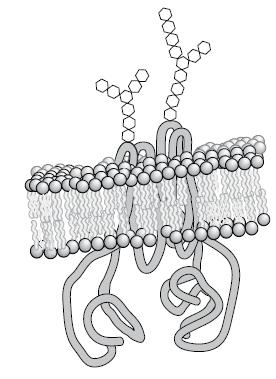The figure shows the CFTR (cystic fibrosis transmembrane conductance regulator) protein in a cell surface membrane. a.
Question:
The figure shows the CFTR (cystic fibrosis transmembrane conductance regulator) protein in a cell surface membrane.

a. i. Describe the normal function of the CFTR protein.
ii. Use the letter E to indicate the external face of the membrane. State how you identified this face.
b. Cystic fibrosis is caused by a recessive allele of the CFTR gene.
i. Explain the meaning of the term recessive allele.
ii. Explain how cystic fibrosis affects the function of the lungs.
c. As cystic fibrosis is caused by a recessive allele of a single gene, it is a good candidate for gene therapy. Trials were undertaken in the 1990s, attempting to deliver the normal allele of the CFTR gene into cells of the respiratory tract, using viruses or liposomes as vectors. Explain how viruses deliver the allele into cells.
d. In some people with cystic fibrosis, the allele has a single-base mutation which produces a ‘nonsense’ (stop) codon within the gene.
i. Explain how this mutation would prevent normal CFTR protein being produced.
ii. A new type of drug, PTC124, enables translation to continue through the nonsense codon. Trials in mice homozygous for a CFTR allele containing the nonsense codon have found that animals treated with PTC124 produce normal CFTR protein in their cells. The drug is taken orally and is readily taken up into cells all over the body.
Using your knowledge of the progress towards successful gene therapy for cystic fibrosis, suggest why PTC124 could be a simpler and more reliable treatment for the disease.
Step by Step Answer:

Cambridge International AS And A Level Biology
ISBN: 9781107636828
4th Edition
Authors: Mary Jones, Richard Fosbery, Jennifer Gregory, Dennis Taylor





